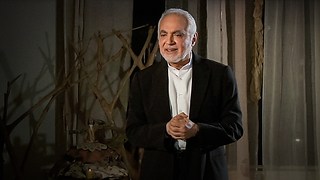Activities
Deepen your comprehension of Understanding Islam with these carefully crafted educational exercises that let you get the most out of this TED Studies subject.
Activity 1
As noted in the Understanding Islam analysis, Islam is an incredibly diverse religion. Select one country or region and learn more about the history of the Muslim faith in that area. When and how was Islam introduced? What has been its relationship to other religions in the country or region (if any)? How significant is Islam's role in shaping the governance and culture of the country or region today? Compare what you learned to the historical accounts of Mustafa Akyol and others, as appropriate.
Activity 2
Reflect on what you learned about the Qur'an in the Understanding Islam introductory essay and in the TEDTalks by Hazleton, Armstrong and Abdul Rauf. Then speak to devout Muslims, Christians, Jews, Hindus and/or Buddhists about their engagement with their faith's sacred text(s). What do they believe about the origins and authorship of their sacred text(s)? How important are the text(s) to inspiring and sustaining their faith? How do they use scripture in their daily religious practices?
Activity 3
Examine the results of public opinion polls surveying Muslims worldwide. Good resources include the following:
- Kohut, A., Wike, R., Horowitz, J.M., Simmons, K., Poushter, J., Barker, C.,...& Mueller Gross, E. (2012). Most Muslims Want Democracy, Personal Freedoms, and Islam in Political Life. Washington, D.C. Pew Research Center.
- Telhami, S., Lebson, M., Lewis, E. & Medoff, A. (2011). Annual Arab Public Opinion Survey. College Park, MD: University of Maryland.
- Abu Dhabi Gallup Center (2011). Muslim Americans: Faith, Freedom and the Future.
- Esposito, J.L. and Mogahed, D. (2008). Who Speaks for Islam? What a Billion Muslims Really Think. New York: Gallup Press, 2008.
How does the data relate to the TEDTalks in Understanding Islam — where is there congruence, and where is there contradiction? Which data points do you find most striking? Create an infographic presenting what you consider to be the most interesting results of the public opinion polls. For infographic inspiration, visit Islamographic.com.
Activity 4
Work with a local interfaith council and/or Muslim congregation to organize community screenings of some of the films and television documentaries mentioned in the Understanding Islam instructor materials. These include:
- Paradise Now (Warner Brothers, 2005)
- Just Like Us (Lionsgate, 2011)
- The Axis of Evil Comedy Tour(Image Entertainment, 2007)
- Maz Jobrani: Brown and Friendly (Salient Media, 2009)
- Allah Made Me Funny: Live in Concert (Unity Productions Foundation, 2009)
- Pop Goes Islam (Al Jazeera, 2012)
- Wham! Bam! Islam! (Endeavor Films, 2011)
Provide participants with copies of the Understanding Islam introductory and summary essays (in advance of the screening, if possible). Use the essays as a reference to help you generate discussion questions to follow the film(s). After the screening, ask participants to identify the most fascinating, inspiring, troubling, or surprising thing(s) they learned from the films and from each other.
Relevant talks





